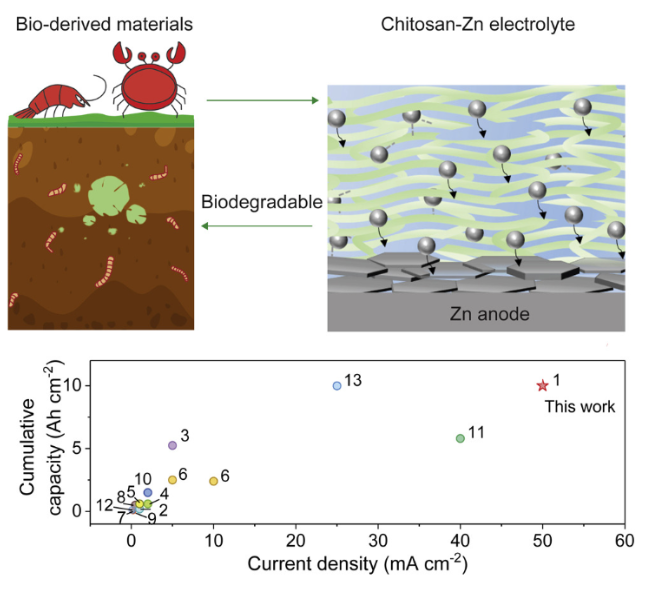Alternatives to the conventional battery have been explored before, but a team of researchers from the University of Maryland and University of Houston have uncovered a surprising solution often reserved for coastal dinner plates: crabs. More specifically, an electrolyte found in crab shells could help scientists build a better battery.
Their findings were published Thursday in the peer-reviewed journal Matter.
Videos by VICE
The Energizer Bunny drummed its way into popular culture more than 30 years ago, but since then, batteries have earned a bad reputation – mostly because they can seep toxic chemicals like lead and lithium into soil and water supply. Although they’re well-intentioned in terms of reducing harmful environmental impact, electric cars and renewable energy sources like solar and wind have increased demand for batteries, new research points out.
“Vast quantities of batteries are being produced and consumed, raising the possibility of environmental problems,” Liangbing Hu, director of the University of Maryland’s Center for Materials Innovation, said in a press release. “For example, polypropylene and polycarbonate separators, which are widely used in Lithium-ion batteries, take hundreds or thousands of years to degrade and add to environmental burden.”
Batteries generally need an electrolyte to transfer ions back and forth between negatively and positively charged. Unfortunately, many of the batteries on the market today use corrosive chemicals as electrolytes that have been known to burst into flames when disposed of. The researchers’ new and improved battery, however, utilizes a gel electrolyte made from chitosan.

“Chitosan is a derivative product of chitin. Chitin has a lot of sources, including the cell walls of fungi, the exoskeletons of crustaceans, and squid pens,” Hu said. “The most abundant source of chitosan is the exoskeletons of crustaceans, including crabs, shrimps and lobsters, which can be easily obtained from seafood waste. You can find it on your table.”
According to the researchers, these crabby batteries are highly energy efficient and could be a sufficient alternative for storing energy for wind and solar power grids. “These advantages of the chitosan-Zn electrolyte not only enable high-rate and durable Zn-metal batteries but also suggest the potential of natural biopolymers for sustainable and green energy-storage applications,” the authors wrote in the paper.
On top of that, chitosan is biodegradable, which means it can be broken down within five months. And instead of putting more lead and lithium into the ground, the only waste they leave behind is zinc, which can be recycled.
“The chitosan-Zn electrolyte derived from natural biomaterial (shrimp, crab, and so on) not only displays excellent performance in batteries but also releases the constituents back to the environment in a natural way,” the authors wrote.
Hu said that he hopes, in the future, all batteries will be made of biodegradable materials. Until then, consider the findings yet another reason to keep eating crabs, because there’s a fine line between splurging on shellfish and powering your future Tesla.
Sign up for Motherboard’s daily newsletter for a regular dose of our original reporting, plus behind-the-scenes content about our biggest stories.

